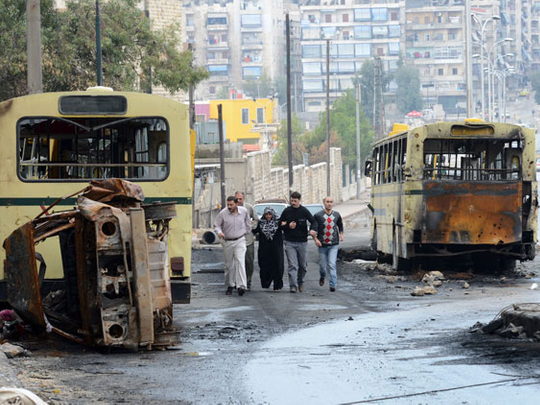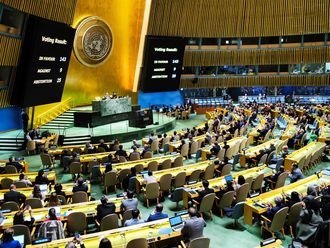
Dubai A car bomb attack in southern Damascus and outbursts of fighting threatened to undermine a fragile ceasefire that took effect in Syria on Friday after President Bashar Al Assad’s regime and the main rebel force agreed to down arms for a four-day Eid Al Adha holiday.
But the violence was still at unusually low levels even though the ceasefire had “collapsed” in several regions of the country, said the Syrian Observatory for Human Rights.
Five people were killed and 32 wounded in the bomb attack in southern Damascus, Syrian state television said, while a watchdog said children were among the wounded. The bombing had targeted residential buildings for police officers and their families and that children were playing in the area when the attack occured.
And there were no indications from either the Al Assad regime or the main rebel Free Syrian Army (FSA) that they were abandoning the truce.
“The ceasefire has collapsed in several regions of Syria but there is still less violence and fewer victims than usual,” Observatory director Rami Abdel Rahman was quoted as saying.
He said fighting took place in various parts of the country, including in and around the capital Damascus, in the second city Aleppo, in the central city of Homs and near the Wadi Deif military base in the northwest.
By late afternoon, the monitoring group said, 23 people had died so far in violence, including 10 soldiers and four rebels in the fighting at Wadi Deif, instead of the dozens killed across the country in past days.
On Thursday, at least 135 people were killed, the Observatory said, including 65 civilians, 41 soldiers and 29 rebels.
Regime forces and the FSA said on Thursday they would follow UN-Arab League peace envoy Lakhdar Brahimi’s call for the temporary ceasefire, but both reserved the right to respond to any aggression.












